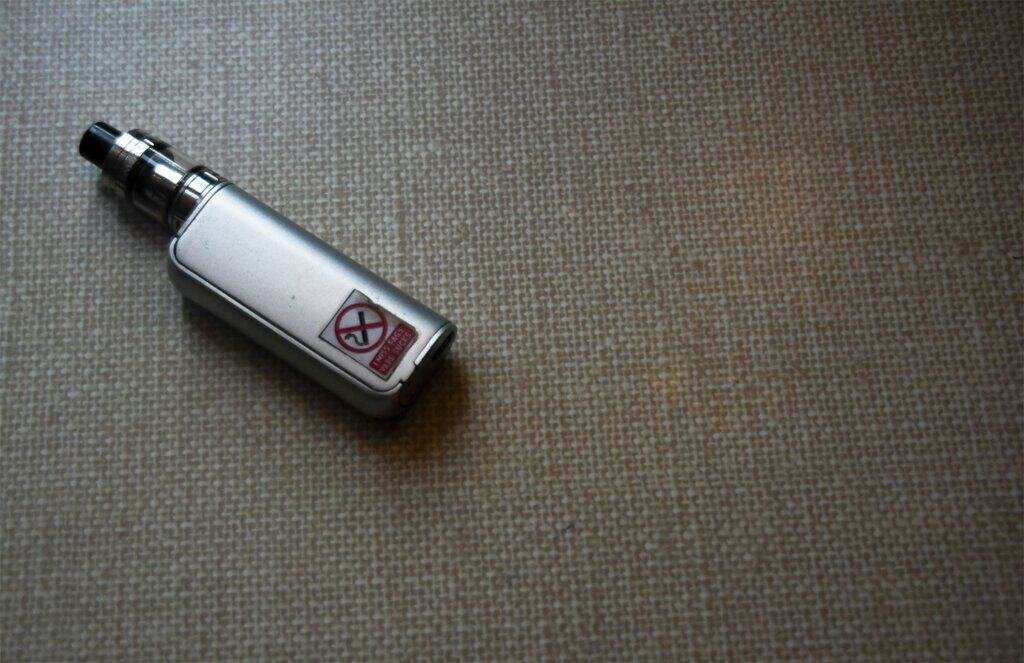
Permanent matches, a handy tool for outdoor enthusiasts and survivalists, often raise questions about their fuel requirements. This article explores whether lighter fluid is necessary for the operation of permanent matches.
Yes, permanent matches typically require lighter fluid to function. The fluid fuels the wick, which, when struck against the striking surface, ignites to create a flame.
We’ll delve into the specifics of how permanent matches use lighter fluid, the types of fluid suitable, and tips for refueling.
How Permanent Matches Work with Lighter Fluid

The Basic Mechanism of Ignition
Permanent matches typically consist of a metal rod and a striking surface. The rod is infused with a wick soaked in lighter fluid. When this rod is struck against the rough surface, friction generates enough heat to ignite the lighter fluid soaked in the wick, producing a flame.
Role of Lighter Fluid in the Match
Lighter fluid acts as the primary fuel source for permanent matches. It’s absorbed by the wick inside the match, and upon ignition, it sustains the flame. The quality and type of lighter fluid can significantly impact the efficiency and duration of the flame.
Wick Saturation and Flame Sustainability
The wick inside the permanent match needs to be properly saturated with lighter fluid to sustain a flame. If the wick is too dry, the match might not ignite, whereas an overly saturated wick can lead to a larger, uncontrollable flame.
Impact of Striking Technique on Ignition
The technique used to strike the match against the surface plays a crucial role in ignition. A firm and quick strike generates more friction and heat, leading to a more reliable ignition. Consistency in the striking technique can also extend the lifespan of the striking surface.
Maintenance of the Fuel Reservoir
Regular maintenance of the fuel reservoir is essential for the match’s functionality. This includes ensuring the reservoir is adequately filled with the correct type of lighter fluid and checking for any leaks or damage that could affect performance.
Types of Lighter Fluid Suitable for Permanent Matches

Standard Lighter Fluid
The most commonly used lighter fluid for permanent matches is the standard naphtha-based fluid. It’s readily available, affordable, and provides a reliable source of fuel for a consistent flame.
Butane Fluid Options
Some modern permanent matches are designed to work with butane, a cleaner-burning alternative to naphtha. Butane can offer a more controlled flame and is less prone to evaporation.
Alcohol-Based Fluids
Alcohol-based fluids, such as isopropyl alcohol, can be used in certain types of permanent matches. These fluids burn cleaner than naphtha but may provide a lower heat output.
Environmental Considerations
Eco-conscious users might opt for environmentally friendly lighter fluids made from sustainable or less harmful substances. These options are designed to reduce environmental impact while maintaining functionality.
Specialty Fluids for Extreme Conditions
For use in extreme conditions, specialty fluids that are designed to perform in high-altitude or sub-zero environments are available. These fluids ensure that the permanent match remains functional in challenging outdoor scenarios.
Avoiding Unsafe or Incompatible Fluids
It’s important to avoid using unsafe or incompatible fluids, such as gasoline or kerosene, which can damage the permanent match or pose safety risks. Always follow the manufacturer’s recommendations when choosing a lighter fluid.
Refueling Your Permanent Match

Identifying When Refueling is Needed
Knowing when to refuel your permanent match is the first step. Signs include a weaker flame, difficulty in igniting, or the wick appearing dry. Regular checks will help you determine the right time to add more lighter fluid.
Choosing the Right Type of Fuel
As discussed earlier, selecting the right type of lighter fluid is essential. Ensure that the fuel you use is compatible with your permanent match model to avoid damage and maintain efficiency.
The Refueling Process
Refueling a permanent match typically involves removing a part of the match to access the fuel reservoir, then carefully adding the lighter fluid. It’s important to avoid overfilling, as this can lead to spills and safety hazards.
Safety Precautions During Refueling
Safety is paramount when handling flammable liquids. Refuel your permanent match in a well-ventilated area, away from any sources of ignition, and ensure that you wipe away any spills before igniting the match.
Post-Refueling Checks
After refueling, it’s a good practice to conduct a safety check. Ensure the match is properly assembled, the fuel reservoir is securely closed, and there are no leaks.
Safety Considerations When Using Lighter Fluid

Proper Handling and Storage of Lighter Fluid
Lighter fluid should be handled with care. Store it in a cool, dry place, away from direct sunlight and heat sources. Use containers designed for flammable liquids to prevent accidental spills or exposure to open flames.
Avoiding Inhalation and Direct Contact
Inhaling fumes from lighter fluid or allowing it to come into direct contact with skin can be harmful. Always use lighter fluid in well-ventilated areas and wear protective gloves if necessary.
Preventing Accidental Ignition
Keep lighter fluid away from open flames, sparks, or any ignition sources. Even small amounts of vapor can ignite, so it’s crucial to refuel permanent matches away from potential fire hazards.
Child and Pet Safety
Ensure that lighter fluid and permanent matches are stored out of reach of children and pets. Their accessibility can pose significant risks due to accidental ingestion or misuse.
Disposal of Lighter Fluid Containers
Dispose of empty lighter fluid containers properly. Don’t burn them or leave them in places where they can be a hazard. Follow local regulations for the disposal of flammable materials.
Emergency Response Preparedness
Be prepared for emergencies. Keep a fire extinguisher or sand bucket nearby when using lighter fluid and know the basic first aid measures for burns or accidental ingestion.
Alternative Fuels for Permanent Matches

Isopropyl Alcohol (Rubbing Alcohol)
Isopropyl alcohol can be used as an alternative fuel in some permanent matches. It burns cleanly but with a lower temperature flame than standard lighter fluid. It’s important to ensure the match is compatible with alcohol-based fuels.
Denatured Alcohol
Denatured alcohol, a form of ethanol with additives, is another alternative. It’s efficient and burns cleanly, making it a suitable choice for some permanent matches. However, its fumes can be more potent, so adequate ventilation is necessary.
White Gas (Camp Fuel)
White gas, or camp fuel, is a highly refined fuel that can be used in permanent matches designed for high-altitude or low-temperature conditions. It’s more volatile than lighter fluid, so extreme caution is required.
Charcoal Lighter Fluid
While similar to standard lighter fluid, charcoal lighter fluid is another alternative. It typically has a different composition and may burn slower or with a different flame characteristic. Ensure that your permanent match can safely use this type of fluid.
Vegetable Oil-Based Fuels
For those seeking a more eco-friendly option, certain vegetable oil-based fuels can be used in permanent matches. These fuels are less toxic but may not provide the same heat output as traditional lighter fluids.
The Environmental Impact of Lighter Fluid

Impact on Ozone Layer and Global Warming
The combustion of lighter fluids can release chemicals that have the potential to harm the ozone layer. Some compounds in these fluids are also greenhouse gases, contributing to global warming.
Soil and Water Contamination Risks
Spills and improper disposal of lighter fluid can lead to soil and water contamination. These pollutants can harm wildlife and ecosystems and potentially enter the human food chain.
Sustainable and Eco-Friendly Alternatives
In response to these environmental concerns, there are sustainable and eco-friendly alternatives to traditional lighter fluids. These alternatives aim to minimize environmental impact while maintaining efficiency.

FAQ
Q1:Can I use a permanent match indoors?
A:Yes, permanent matches can be used indoors, but it’s essential to ensure good ventilation and avoid using near flammable materials. Always follow safety guidelines when using any fire-starting tool indoors.
Q2:How can I minimize the environmental impact of using lighter fluid in my permanent match?
A:Opt for eco-friendly or less harmful lighter fluids, use the match efficiently to reduce waste, and follow proper disposal methods for the fluid and the match.
Q3:Are there permanent matches that don’t require lighter fluid?
A:Yes, some modern permanent matches use alternative fuels or mechanisms that don’t rely on traditional lighter fluid, though these may have different usage and maintenance requirements.
Q4:What should I do if my permanent match leaks lighter fluid?
A:If your permanent match leaks, stop using it immediately. Clean up the fluid carefully, ensuring no contact with skin or inhalation of fumes, and check the match for damage or the need for repair.
Q5:Is it safe to carry a filled permanent match in my backpack while hiking?
A:Generally, it’s safe if the match is properly sealed and stored in a secure compartment. However, always ensure that the match is in good condition and that there’s no risk of accidental ignition.
Q6:Can the lighter fluid in permanent matches freeze in cold temperatures?
A:Lighter fluid can thicken or become less effective in extremely cold temperatures, which may affect the performance of the match. Using a fuel suited for cold conditions can help mitigate this issue.
Conclusion
In essence, permanent matches do require lighter fluid for effective operation, making them a reliable tool for fire-starting in various settings. Understanding the types of suitable fluids, the refueling process, safety considerations, and environmental impacts is key to their responsible use. By considering eco-friendly alternatives and adhering to safety guidelines, users can maximize the benefits of these innovative devices. Permanent matches, when used and maintained correctly with the appropriate fuel, provide a durable, efficient, and environmentally conscious solution for those in need of a reliable flame.

